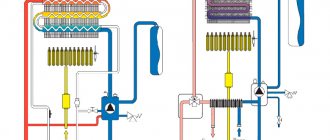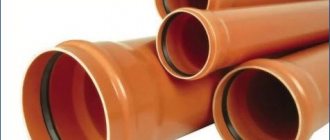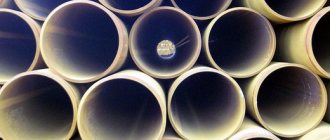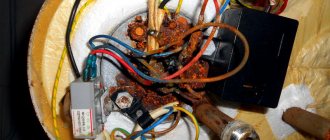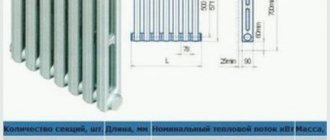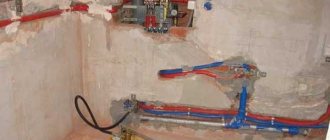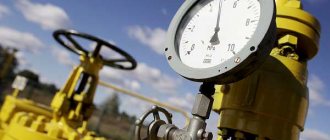Today, heavy cast iron pipes have been replaced by new products made from composites and the latest polymer materials.
They are installed in sewer systems, as well as in melt water drainage devices. But no one has forgotten about cast iron pipes; their popularity has remained at the same level. In some places, only cast iron products can be installed; plastic is simply unacceptable. The service life of cast iron sewer pipes is approximately equal to their polymer counterparts.
Life time
The operating time depends on several parameters. In addition to high strength, the duration of operation of the entire system without repair and replacement of failed parts in different areas is considered very important.
The type of connection present is also taken into account. Bell-shaped sewer systems are considered the most profitable. They make it possible, if a leak occurs, to restore the tightness by additionally sealing the connection.
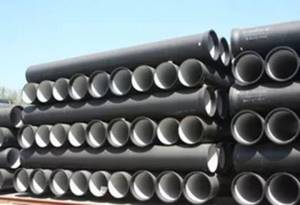
If a socketless pipeline is installed, such repairs cannot be made; the failed section of the pipe will have to be completely replaced. A main line laid from a gray cast iron pipe, if properly maintained and regularly cleaned, will last approximately 80 years.
You can, of course, not monitor the sewer system and not do any cleaning work. The service life of cast iron sewer pipes is reduced by almost half.
Ductile iron pipes are designed to operate for 100 years or more.
What parameters determine the operating time of the sewer system?
To ensure long-term operation of the drain, it is very important that the water supply is made from the highest quality connecting materials.
The surface of cast iron pipes must be flat and smooth. No depressions or growths are allowed.
All dimensions of the pipe (its length and diameters) must fully comply with the current standard.
To increase the service life and protect cast iron from corrosion, the internal and external surfaces of the pipes are treated with petroleum bitumen. To create a special protective coating, special whitened cast iron is sometimes used.
When creating an anti-corrosion coating, the presence of fistulas or any foreign inclusions is not allowed. The surface should be smooth and continuous.
Even the slightest drop of metal that breaks the anti-corrosion coating can cause corrosion. Moreover, this will happen at the very beginning of the operation of the sewer system.
External pipe defects can be easily determined visually by carefully examining the condition of the surface of the product. Internal defects can only be determined by hearing.
When there is a crack or a sinkhole in the pipe, the pipe will make a characteristic sound when tapped. Its duration, as well as the pitch of the tone, is very different from the sound of quality material.
This technology even helps to detect where the damage is located.
In addition to the correct choice of a high-quality connection, the service life of the sewer system also depends on proper installation. Bell pipes must be installed in a specific order. The connection direction must be opposite to the fluid flow. Joints must be sealed and caulked only with high quality materials.
For sewer installation, a large number of additional parts are used:
- Fitting;
- Plugs;
- Tees;
- Adapters;
- Cross-shaped splitters.
When choosing shaped parts, it is necessary to take into account the grade of material. It must correspond to the parameters of cast iron.
If the grades of material are incompatible, the shape of the product connections is disrupted. This happens especially often with large temperature changes.
The socketless bathroom sewer system suffers greatly from these defects. When installing socket connections, when combining them with other parts, such defects do not arise.
Diameters
An important parameter for the characteristics of PVC pipes is their diameter. Sewerage installation in a residential building will be effective when the diameters are selected in accordance with the technical characteristics of the system.
When making a choice, you need to take into account a certain classification of this indicator.
Inner diameter
It is the main thing when calculating the throughput of a pipeline. An approximate scale of internal diameters is formed depending on the role and place in the sewerage design, for example:
- The diameter of the outlet from dishwashers or washing machines should be about 25 millimeters;
- The diameter of the outlet from siphons and shower cabins is 32 millimeters;
- Pipe layout for the sewerage system in a residential apartment - 40-50 millimeters;
- External sewerage requires pipes of the largest diameter, which reaches 160-200 millimeters.
Important! Most often, the diameter of PVC sewer pipes used in the installation of external sewerage corresponds to 110 mm
It should be taken into account that the markings applied at the manufacturer indicate only the outer diameter. As a result, the internal diameter has to be calculated independently by subtracting the wall thickness, also written in the marking, from the external diameter of the pipe
The largest and smallest diameter sizes depend on the type of sewer system - street or internal.
As for external sewerage, the diameter is not regulated. But there are clear recommendations that the diameter of the pipe at the exit from the house should not be less than the external main.
For private households, pipes with diameters from 110 mm to 250 mm can be installed. In systems with more significant loads, it is necessary to use structures up to 400 mm.
How can you increase the service life of cast iron products?
To extend the operating time of a cast iron sewer, the installation of the main should be done using only high quality fittings. The following must not be present on the surface of the pipe:
- influx;
- growths;
- slag;
- metal drops.
If you strictly comply with all GOST requirements and properly care for the system, the service life of the system will reach 100 years.
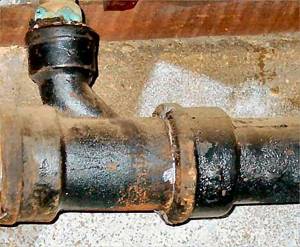
How well cast iron pipes are made is easy to determine, taking into account the external characteristics:
- A fine-grained structure is visible at the fracture.
- Hidden defects are detected by hearing. By tapping the part and listening to the pitch, you can determine the presence of cracks. With high-quality parts, the sound is very different from a defective product.
- Proper installation of the pipeline increases its service life.
Products equipped with a socket must be positioned strictly according to technological rules. The bell line is made in the direction opposite to the direction of flow of the discharged liquid. Sealing of joints and caulking is done only from high-quality materials.
Reliable connection of individual parts is ensured by installing special fittings.
The fitting material must be compatible with cast iron. If you ignore this rule, then when the temperature changes, the shape of the fitting will change. Its geometric parameters will change greatly. As a result, a leak will appear at the junction of the cast iron pipe and fitting. You will have to restore the system and replace failed parts.
Marking
Polyethylene pipes are marked on the outside, the marking interval is 1 m. It includes the following data:
- name of the manufacturer or its trademark;
- product designation;
- date of manufacture.
The product designation contains several additional characteristics, which include:
- the word trumpet;
- brand of polyethylene;
- SDR;
- nominal diameter;
- Wall thickness;
- purpose - technical or drinking;
- used GOST.
As an example, let’s take a pipe marked PE 100 SDR 7.4 – 50 × 6.9 technical GOST 18599-2001.
We read how: a pipe made of PE 100 polyethylene with a diameter of 50 mm and a wall thickness of 4.6 mm, intended for technical needs, manufactured in accordance with GOST 18599-2001.
Video: HOW TO CHOOSE A QUALITY POLYETHYLENE PIPE | REVIEW
How to repair cast iron systems
If a crack or other damage appears, you do not need to replace the entire pipe at once. It can be restored by installing a sealing strip.
Take a rubber gasket and forcefully press it with a metal plate to the site of damage. A clamp is installed on top of the plate. It can be made of copper wire or steel strip held together with bolts.
Today, when laying sewer systems, builders always install cast iron pipes. Their quality and properties fully comply with operating requirements.
We can safely say that cast iron pipes, designed for many years of operation, will never be forgotten. Their characteristics are in many ways superior to the most modern new materials.
Features of arranging a sewerage system using plastic pipes
Plastic sewer pipes, the prices for which were mentioned above, must be laid with a certain slope, which will ensure unhindered removal of waste and wastewater.
If the slope is too great, then build-up will form on the inner walls, which over time will lead to the formation of blockages and traffic jams. If the slope is made smaller or not provided at all, then the wastewater will not leave the house on its own, and the system in this case will be inoperative. Plastic sewer pipes, the prices of which should interest you if you plan to use them when arranging the system, are used in conjunction with a metal drain pipe. It is required for ventilation and is installed at a height of four meters. Its diameter usually varies from 50 to 110 mm.
If we are talking about urban multi-storey buildings, where a sewer riser runs through all floors, its diameter should coincide with the outlet pipe from the toilet. This value is 110 mm. In this case, the pipe is routed to the roof, it is left open. It will communicate with the atmosphere and eliminate vacuum, which could lead to the appearance of unpleasant odors.
When assembling the riser, it is important to strengthen the neck of each pipe with a clamp. If a compensating pipe is installed, its fastening is carried out using the same technology
You should not assume that O-rings will suffice for plastic pipes. Over time, they will certainly become loose, and the joints may lose their tightness.
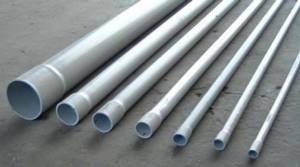
The relevance of the use of cast iron pipes
Today, when a large number of different polymers and the latest composite materials have appeared, cast iron products are considered something ancient.
But despite everything, these “prehistoric products” remain in demand in a variety of industries:
- water supply;
- fire fighting;
- oil pipelines;
- sewerage.
This popularity is due to the ability to operate these pipes for many years. Moreover, the properties of such products fully meet all the requirements necessary when laying a sewer system:
- Not afraid of corrosion. Cast iron resists corrosion more than any steel;
- Thermal expansion always has a minimum value;
- Excellent sound insulator. During operation, the noise of flowing liquid is never heard;
- High strength. Cast iron is not afraid of any mechanical impact. He is not afraid of large pressure drops.
- Emergency situations happen very rarely.
- Cast iron pipes can operate freely at very low or high temperatures. Long-term exposure to a variety of temperature conditions does not affect their properties at all; they remain unchanged.
- Cast iron meets all modern environmental requirements. It does not emit toxic or poisonous substances.
- Does not burn.
- Fire resistant.
- Easy installation due to a large number of various components.
- The labor intensity of the work on laying a sewer line is characterized by low cost.
- Long service life - 100 years.
- Low cost pipe.

